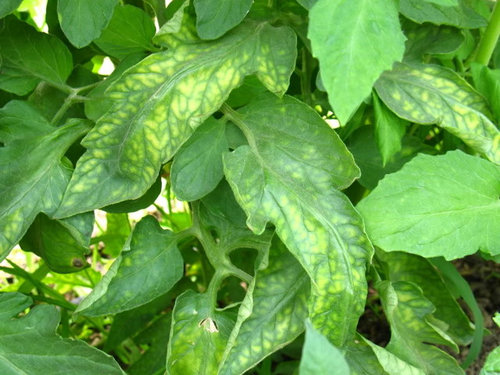Magnesium Deficiency, not early blight or septoria
jrslick (North Central Kansas, Zone 5B)
14 years ago
More Discussions
I have been trying to investigate this problem and I may have figured something out. While it may be Septoria, or even early Blight. I have been working hard at allowing enough ventilation.
At the suggestion of an answer on another listserv, they suggested a deficiency. Then I read about Magnesium.
I think I may have an answer. I am going to still spray for fungus, but I will also at some magnesium. 1 tablespoon per plant.

Compare that to
http://vegetablemdonline.ppath.cornell.edu/PhotoPages/Impt_Diseases/Tomato/Tom_Magnesium.htm
What do you think?
sprtsguy76
pennyrile
Related Professionals
East Rancho Dominguez Landscape Architects & Landscape Designers · Dickinson Landscape Contractors · Flagstaff Landscape Contractors · Laguna Hills Landscape Contractors · North Chicago Landscape Contractors · Panama City Beach Landscape Contractors · Pleasant Grove Landscape Contractors · Roseville Landscape Contractors · Waldorf Landscape Contractors · Big Lake General Contractors · Conway General Contractors · Linton Hall General Contractors · Redding General Contractors · Westminster Decks, Patios & Outdoor Enclosures · Eustis Decks, Patios & Outdoor Enclosurespennyrile
jrslick (North Central Kansas, Zone 5B)Original Author
kandm
pennyrile
jrslick (North Central Kansas, Zone 5B)Original Author